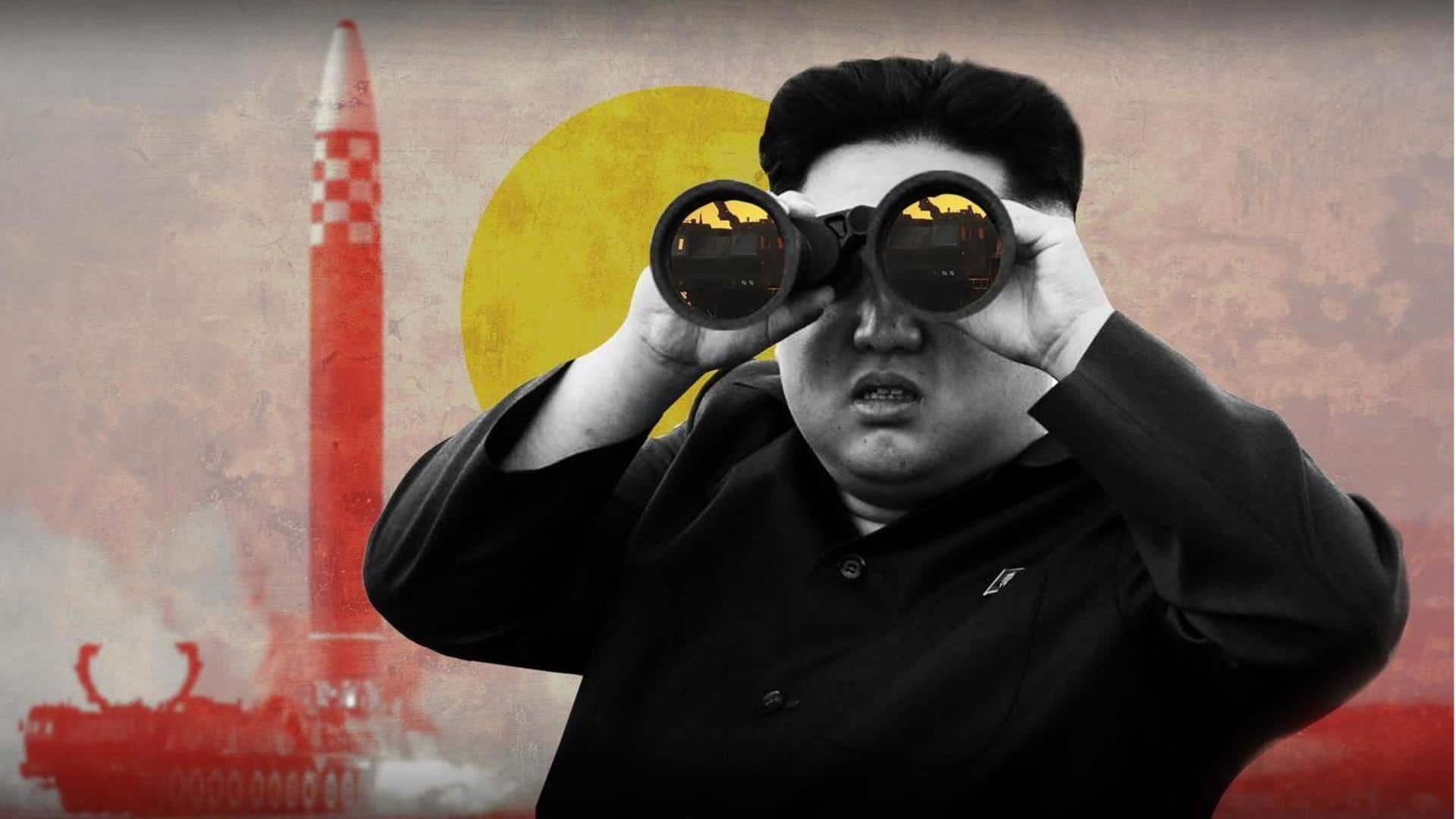
North Korea confirms testing ICBM, warning to US, South Korea
What's the story
North Korea on Sunday announced it test-fired an intercontinental ballistic missile (ICBM) in a warning to South Korea and the United States, adding the "surprise" drill showcased its "fatal nuclear counterattack" capability. A Hwasong-15 missile was launched from the Pyongyang airport on Saturday afternoon (local time), hours after Supreme leader Kim Jong-un ordered the "sudden launching drill," reported the Korean Central News Agency (KCNA).
Context
Why does this story matter?
This comes at a time when the relations between the neighboring Korean countries are at an all-time low after North Korea proclaimed itself as an "irreversible" nuclear state. In response, South Korea's President Yoon Suk Yeol sought to boost ties with the United States to strengthen Washington's extended deterrence offering—the US's pledge to come to Seoul's defense even with nuclear weapons, if necessary.
Details
ICBM units ready for 'mobile, mighty counterattack': North Korean leadership
The North Korean leadership lauded the missile test and said it showcased "the actual war capacity of the ICBM units which are ready for mobile and mighty counterattack," as per KCNA. Meanwhile, the South Korean military revealed it detected an ICBM launch at 17:22 on Saturday (local time). Japan also confirmed the ICBM flew for 66 minutes before plummeting into its Exclusive Economic Zone.
More details
Kim Yo-jong accuses US of misusing UNSC's powers
Separately, Kim Yo-jong, Jong-un's sister, on Sunday called out the US for trying to transform the United Nations Security Council (UNSC) into an alleged "tool for its heinous hostile policy" toward North Korea. "I warn that we will watch every movement of the enemy and take corresponding and very powerful and overwhelming counteraction against its every move hostile to us," said Yo-jong.
Know more
Know about North Korea's Hwasong-15 launch
After Jong-un's written order on Saturday morning, the ICBM test was performed on an "emergency firepower combat standby order" under the Missile General Bureau's supervision, KCNA said. Furthermore, the state news agency revealed that the missile flew about 989km for nearly 67 minutes and reached a maximum altitude of 5,768km before precisely hitting a pre-set area in open waters.
Expert opinions
Missile expert gives insight into Pyongyang's ICBM launch
Speaking to the news agency Reuters, a missile expert at the US-based Carnegie Endowment for International Peace, Ankit Panda, said, "The important bit here is that the exercise was ordered day-of, without warning to the crew involved." "The amount of time between the order and the launch is likely going to be decreased with additional testing," Panda added.
Twitter Post
Approximate trajectory of ICBM launched by North Korea
Approximate trajectory flown by the #ICBM that #NorthKorea tested today. A highly lofted trajectory.
— Dr Marco Langbroek (@Marco_Langbroek) February 18, 2023
(reconstruction based on Japanese DoD info).
When launched on a 'normal', non-lofted trajectory, the range would be 18000+ km, i.e. capable of reaching any place on Earth pic.twitter.com/9b2cGlXtav
In depth
Hwasong-15 first tested in 2017
Developed by North Korea, the Hwasong-15 is Pyongyang's intercontinental ballistic missile that took its maiden flight on November 28, 2017. Notably, it is also reportedly the first ICMB developed by the country that theoretically has the capability of reaching all the way to the American mainland. It is estimated to have an operational range of 13,000 kilometers.
Furher details
North Korea likely to conduct more weapons testing: Experts
As per KCNA, North Korea's military received an "excellent mark" after the testing, and the country's ruling party, the Workers' Party of Korea, "highly appreciated the actual war capacity of the ICBM units." As per experts, Pyongyang will now likely conduct more weapon tests, including a new solid-fuel ICBM that might help it deploy missiles quicker during a war.
Warning
North Korea warns military action over joint S Korea-US drills
Last week, North Korea threatened to unleash "unprecedentedly persistent and strong counteractions" in the coming weeks if Washington and Seoul hold their planned military drills. "In case the US and South Korea carry into practice their already-announced plan for military drills...they will face unprecedentedly persistent and strong counteractions," a spokesperson for North Korea's foreign ministry was quoted as saying by Yonhap News Agency.